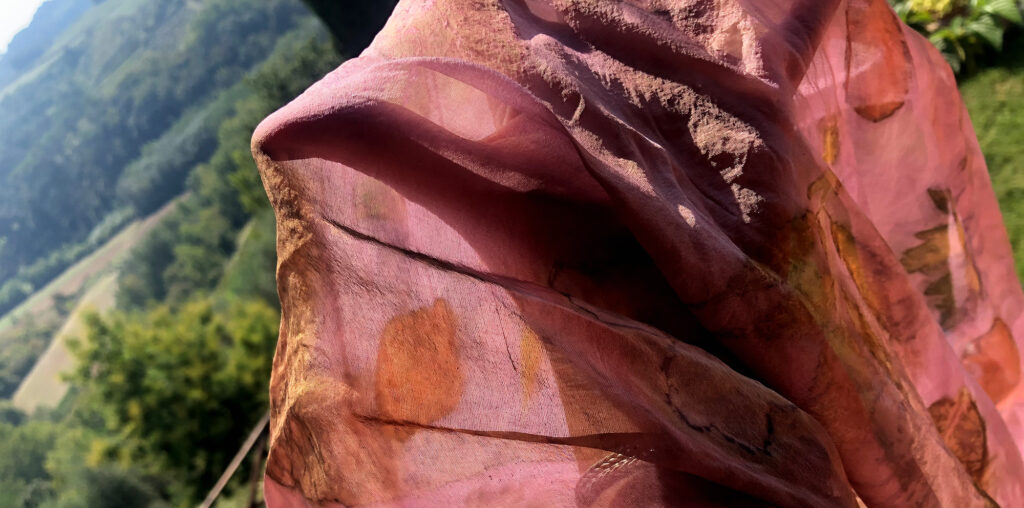” The most wonderful age is when you stop celebrating your birthday and start celebrating achieving your dreams… .. ” (Jorge Cota)
The botanical printing process is a complex process that begins with the preparation of the fabrics (mordanting), followed by the collection of plants and flowers and their printing. The chemical reaction that determines the printing is based on a reaction between the tannin rich leaves and ferrous sulphate which is either added in the mordanting process or is added during the printing phase. The leaves are arranged on the fabric, it is then rolled up into bundles and tied up on a support for it to be boiled or steamed. This fixes the colours from the leaves and flowers onto the fabric. The result is often a surprise, and quite original. Every piece is unique. There are so many variables that it is impossible to predict the final result. These natural objects (leaves, bark, roots, berries, fruit and seeds), collected at various times of year can produce different colours and effects and this also changes according to the fabric used. My favourite time is autumn. In this season the leaves, which are richer in tannins, leave sharper, more clearly defined prints that are so realistic that you can see the veins and shades of colour of the original. Despite all the variability it is very important to visualize the result you wish to achieve. The desired composition and the arrangement of the leaves on the fabric affect the piece’s aesthetic qualities and make it unique. The magical nature of this process sucks you into it and keeps you going, including through disappointments, which always have something to teach you because there is always something new to learn in this wide ranging technique.

